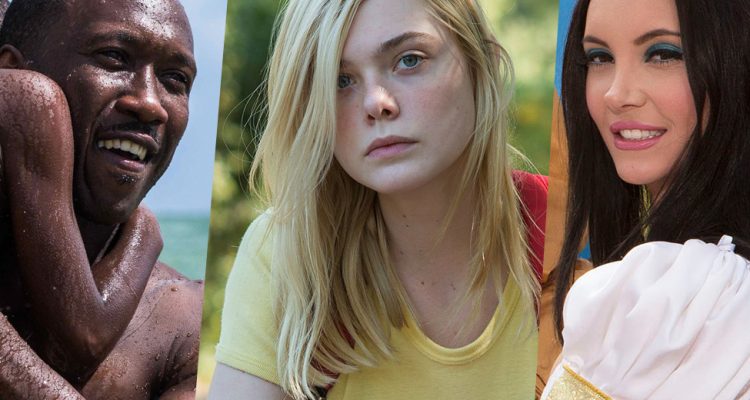Every year when I do this, I try to find a theme among the films that stuck with me for the year. Sometimes it’s women directors or the American Dream or the triumph of the human spirit. I find that those themes run through this list as well, from Mike Mills’ “20th Century Women” to Andrea Arnold’s “American Honey” to Jim Jarmusch’s “Paterson.” But as I was writing this, a theme revealed itself to me, a theme of “this movie shouldn’t work but it does,” encompassing, yes “Paterson” as well as “Toni Erdmann,” and “Camerperson.” Each one of these films feels like a small miracle, that it was even made, that it emerged so singularly formed. This feels especially true of films like “Moonlight” and “The Love Witch.” So this year I’m giving thanks and praise for little cinematic miracles and the visionary filmmakers who are able to guide their passage into the world.
Here’s my top 10 of 2016…..
 1. “20th Century Women”
1. “20th Century Women”
There’s no other word to describe Mike Mills’ film than “masterpiece.” It’s astounding that it feels so of a piece, while featuring such stand-out work from the individuals that made it, from Annette Bening at her wry, hilarious best, to Greta Gerwig shining within the ensemble, to preternaturally sensitive newcomer Lucas Jade Zumann, and Elle Fanning and Billy Crudup and editor Leslie Jones and composer Roger Neill. It’s all singularly excellent work that comes together to create a film that’s buoyantly curious, empathetic, knowing, and poignant. A stunning tribute that works because of its autobiographical specificity, and still manages to feel universal in its appeal and appreciation.
 2. “Moonlight”
2. “Moonlight”
Barry Jenkins‘ autobiographically inspired film finds its power in its specificity, in a life story shared in part by two men, Jenkins and playwright Tarell McCraney, whose work served as the source material. Playing the character of Little/Chiron/Black, Alex Hibbert, Ashton Sanders, and Trevante Rhodes each brought a distinct touch to the character that resulted in a trio of the best cinematic performances to be found on any screen this year (not to overlook the excellence of Mahershala Ali, Janelle Monáe or Naomie Harris). Perhaps the most powerful element of “Moonlight” is that it’s a film about sexuality that’s not about sex, but about intimacy. The intimacy lost between a mother and son, a relationship ravaged by drugs. The intimacy found in an unlikely mentor. The intimacy to be found between boys, whether gentle or violent. It’s a deeply important reminder of the power to be found in tenderness.
 3. “American Honey”
3. “American Honey”
Andrea Arnold’s ethnographic observation of the American South feels less like watching a movie and more like living an experience, going on a journey for three hours. After seeing this film alone on a Friday afternoon, I felt like I had gone through something with the other moviegoers; I wanted to stop them and talk about it. The film haunted my dreams; the soundtrack of trap and country pop haunts my Spotify app. If “Spring Breakers” was the teen-girl “Scarface” of 2012, a neon nightmare demanding a piece of the American Dream pie, “American Honey” is the gentle rebuke to the notion that 2016 taught us all — the American Dream still isn’t for everyone. But there’s still pavement to pound, joints to smoke, cowboys to rob and grass to roll in. “American Honey” demands your presence in the present and makes it worth the ride.

4. “Hell Or High Water”
I truly cannot think of a cinematic moment that better represents contemporary America than a pudgy Ben Foster, sporting wraparound shades, opening machine-gun fire in the middle of the road on an armed civilian militia in Ford Explorers, who have pursued him out of the bank he was robbing in order to pay off the lien on his family’s foreclosed ranch. Please do not tell me “Hell Or High Water” isn’t a modern Western (as someone claimed in a comment on my website) — it absolutely is. We’ve got shootouts, we’ve got steeds, we’ve got salty waitresses and downtrodden baby mamas, a man who knows Indians, and an Indian himself. Taylor Sheridan and David Mackenzie’s film is thus far the best Western of the 21st century, a film that uses the archetypes and symbols of the genre to comment on the contemporary issues of the day. And damn if it isn’t quotable.
 5. “Cameraperson”
5. “Cameraperson”
I wasn’t sure what I was in for when I settled into an empty screening room in January, before Sundance, to watch “Cameraperson” by myself. I knew that I loved docs and women directors, and the premise was intriguing. But to describe Kirsten Johnson’s “Cameraperson” (a documentary DP creates a filmed “memoir” using the outtakes from all the films she’s shot) doesn’t even come close to explaining what it actually is: a gripping narrative of a filmmaker that actively asserts the importance of the person behind the camera — the mother, the sister, the woman who is unseen, on the other side of the lens capturing moments mundane and horrifying and divine. “Cameraperson” is a deeply personal story that lets us into Johnson’s life and mind though we rarely see her, and it’s also a universal theory of non-fiction filmmaking and documentary form that argues for the acknowledgment of the individual behind the camera.

